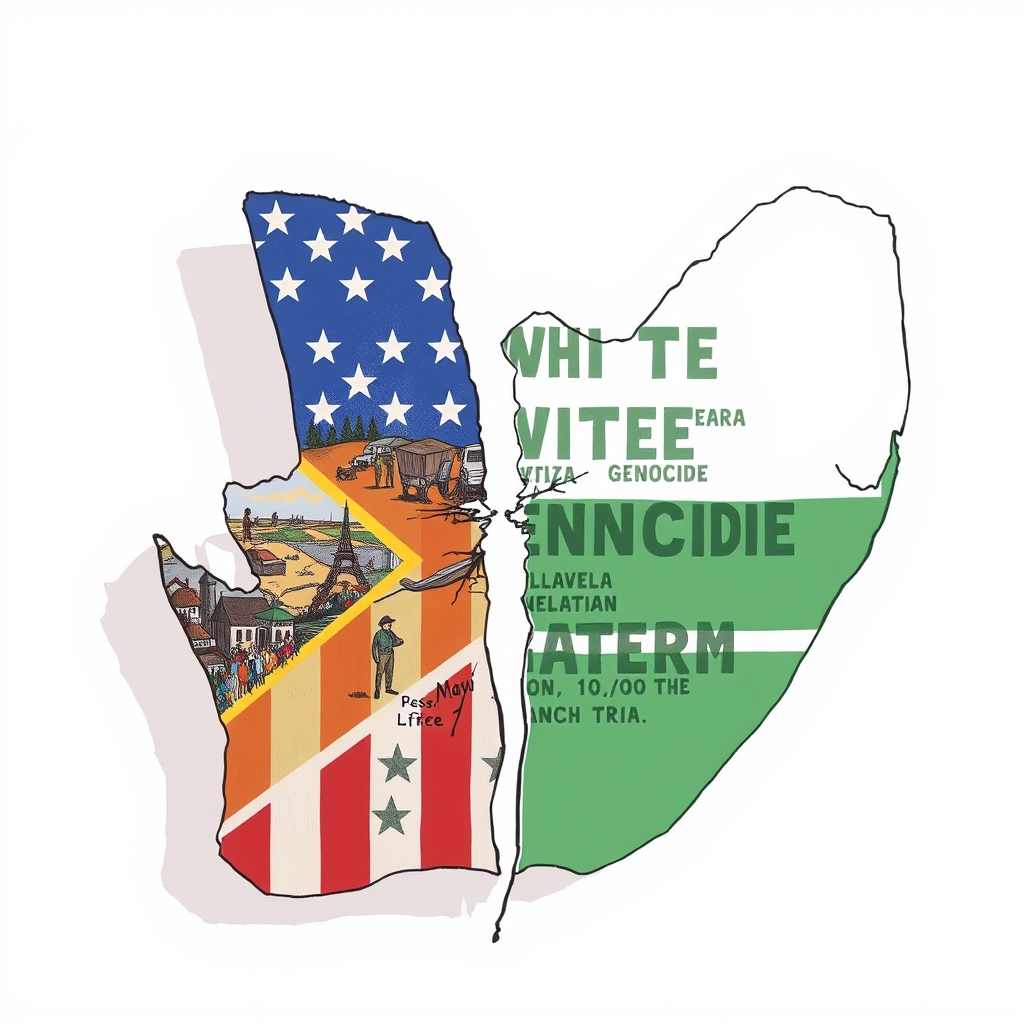South Africa Reels From Trump’s False Claims

The recent encounter between President Cyril Ramaphosa of South Africa and Donald Trump revealed a deeply troubling dynamic, exposing South Africa to the volatile intersection of U.S. domestic politics and a dangerous conspiracy theory. The presentation of fabricated evidence to Ramaphosa regarding alleged violence against white farmers wasn’t merely a diplomatic misstep; it was a calculated maneuver, seemingly designed to both embarrass Ramaphosa and fuel a narrative with roots in white supremacist ideology. While the U.S. media largely debunked the claims promoted by Trump and Elon Musk, the damage is done, and South Africa now faces the reality of having its internal issues weaponized within the American political landscape.
The “white genocide” myth is a cynical distortion of South Africa’s complex history and present-day challenges. While acknowledging the very real trauma of violence experienced by white farmers, to single them out ignores the pervasive, systemic violence that plagues all South African communities – a legacy of apartheid and ongoing socio-economic disparities. The focus on white victims actively diminishes the suffering endured by the Black majority under decades of oppression and the continuing struggle for equality. It’s a particularly galling narrative given South Africa’s efforts at reconciliation.
Ramaphosa’s attempt to reframe the meeting as a positive step towards improved relations clearly failed. Pretoria must now navigate a precarious situation, anticipating continued attempts by Washington to exploit racial tensions for political gain. The fact that South Africa’s internal affairs have become a talking point within “MAGA-world” underscores the extent to which the country’s challenges are now entangled with U.S. political maneuvering.
Despite recent foreign policy successes – securing investment from the European Union and gaining support for its case against Israel at the International Court of Justice – South Africa’s domestic fundamentals remain deeply concerning. Sky-high unemployment, widespread poverty, staggering income inequality, and a daily toll of over 70 lives lost to violent crime create a fertile ground for instability. Trump could have easily highlighted these issues to embarrass Pretoria, but instead chose to amplify a dangerous and unsubstantiated conspiracy theory.
The Phala Phala scandal, involving undeclared cash found on Ramaphosa’s farm, further complicates matters, eroding public trust and highlighting the deep-seated corruption that plagues the ruling African National Congress. The party’s recent loss of its parliamentary majority for the first time since the end of apartheid is a clear indication of growing public dissatisfaction.
Ultimately, convincing Trump or Musk to abandon the “white genocide” myth is a lost cause. South Africa’s realistic goals must now focus on damage control: limiting potential U.S. tariffs, reassuring investors, and preventing targeted sanctions against officials. Given Trump’s declining approval ratings and the inevitable loss of influence that comes with a second term’s waning months, a strategy of containment and damage limitation appears to be the most pragmatic course of action for Pretoria. The situation demands a sober assessment of the new reality: South Africa is now caught in a crossfire of U.S. political agendas, and navigating this turbulent landscape will require skillful diplomacy and a resolute commitment to addressing its own internal challenges.